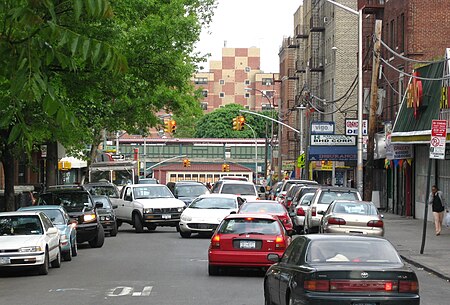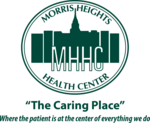University Heights, Bronx

University Heights is a neighborhood of the West Bronx in New York City. Its boundaries, starting from the north and moving clockwise, are: West Fordham Road to the north, Jerome Avenue to the east, West Burnside Avenue to the south and the Harlem River to the west. University Avenue is the primary thoroughfare in University Heights. The neighborhood is mostly part of Bronx Community Board 5, with a small portion in Community Board 7. Its ZIP Codes include 10453 and 10468. The nearest subway is the IRT Jerome Avenue Line (4 train), operating along Jerome Avenue. The area is patrolled by the New York City Police Department's 46th Precinct. NYCHA property in the area is patrolled by P.S.A. 7 at 737 Melrose Avenue in the Melrose section of the Bronx.
Excerpt from the Wikipedia article University Heights, Bronx (License: CC BY-SA 3.0, Authors, Images).University Heights, Bronx
West 183rd Street, New York The Bronx
Geographical coordinates (GPS) Address Nearby Places Show on map
Geographical coordinates (GPS)
| Latitude | Longitude |
|---|---|
| N 40.86 ° | E -73.909 ° |
Address
West 183rd Street 102
10453 New York, The Bronx
New York, United States
Open on Google Maps






